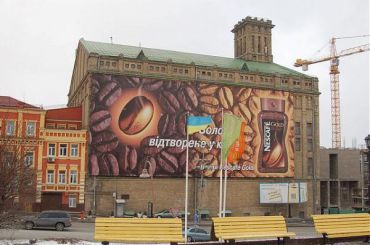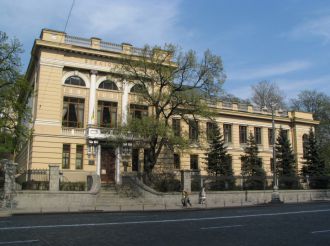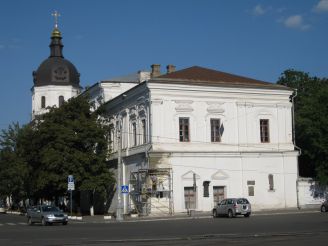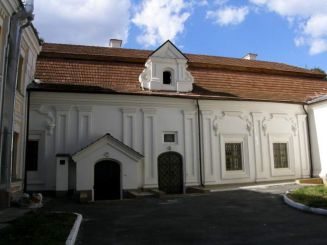Parliamentary Library of Ukraine (branch), Mill Brodsky
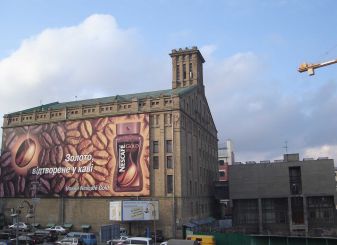
History of the Library
In the early 19th century in Kiev Hem, where there are numerous estates of rich merchants, it was easy to hold warehouses for trade items that are delivered to the city by the river. The first guild merchant Andrew Anse Glaser bought land here.
Together with partners in 1855, he filed an application for the construction of the mill in this convenient location. The three-storey building of the mill, as well as all the surrounding buildings: smithy, well, compartment of the steam engine was built in 1856-1857 years. After 11 years, all the property bought Amalia Schedel. And in 1870, they took possession of one of the founders of the family Sugar Brodsky, send it later production son L. Brodsky.
The new owners bought the area in the neighborhood, the mill expanded space. The four-storey building was built in 1888 already. A fire in 1891 brought huge losses institution. A year later, production began to recover under the title "Joint Stock Company Kiev steam flour mill." Stood at the head of Lazarus Brodsky. By the early 20th century, the company prospered. In 1904, died L. Brodsky, shareholders and the community was named after the famous industrialist.
In 1906, a fire broke out again. The company again restored. It works even in spirited during the Civil War. However, in 1920 another devastating fire destroyed and the main building, and construction. As a result of this event survived only two designs. One of them - the elevator, called the people of Kiev mill Brodsky.
This building was erected in 1907. Designed it Ch Wolkenstein, supervised the work of architect V. Immortal. The building was built in the style of the Basilica of the Middle Ages to the tower top. Inside it is divided into seven floors tiers.
During Soviet times, it housed a granary, warehouses. In 1970 the house was given to the Ministry of Culture of Ukraine, where the stacks settled Library. CPSU. Now here is the National Parliamentary Library of Ukraine





